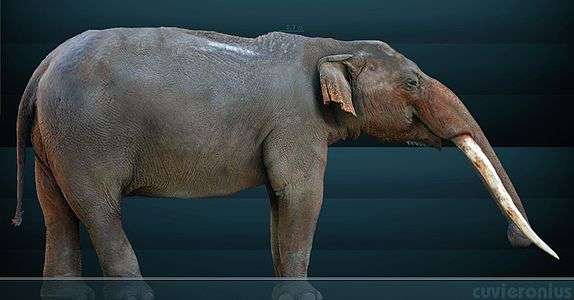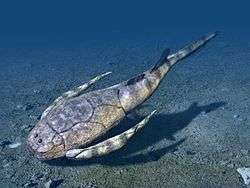Neotamandua
| Neotamandua | |
|---|---|
| Scientific classification | |
| Kingdom: | Animalia |
| Phylum: | Chordata |
| Class: | Mammalia |
| Superorder: | Xenarthra |
| Order: | Pilosa |
| Suborder: | Vermilingua |
| Family: | Myrmecophagidae Rafinesque 1815 |
| Genus: | Neotamandua Rovereto 1914 |
| Species | |
| |
Neotamandua is an extinct genus of anteaters that lived in the Miocene to Pliocene in South America. Their fossils have been found in the Miocene Collón Cura Formation of Argentina,[2] the Honda Group at La Venta in Colombia and the Pliocene Araucano Formation in Argentina.[3] Its closest living relatives are the giant anteater (Myrmecophaga tridactyla) and tamanduas (genus Tamandua).[3][2] The species Neotamandua borealis was suggested to be an ancestor of the giant anteater.[4] Patterson (1992) suggested the Neotamandua fossils are very similar to Myrmecophaga, which would mean Neotamandua may be congeneric with Myrmecophaga.[2]
References
- ↑ Rovereto, Cayetano (1914). "Los estratos Araucanos y sus fósiles". Anales del Museo Nacional de Historia Natural de Buenos Aires. 25: 1–247.
- 1 2 3 "Neotamandua". Paleontology Database. Retrieved 2012-07-23.
- 1 2 Gaudin, T.J. & Branham, D.G. (1998). "The Phylogeny of the Myrmecophagidae (Mammalia, Xenarthra, Vermilingua) and the Relationship of Eurotamandua to Vermilingua" (PDF). Journal of Mammalian Evolution. 5 (3): 248. doi:10.1023/a:1020512529767. Retrieved 2012-07-23.
- ↑ Hirschfeld, S.E. (1976). "A New Fossil Anteater ( Edentata , Mammalia ) from Colombia , S . A . and Evolution of the Vermilingua". Journal of Paleontology. 50 (3). JSTOR 1303522/.
This article is issued from
Wikipedia.
The text is licensed under Creative Commons - Attribution - Sharealike.
Additional terms may apply for the media files.


.jpg)
